Overview of ornamental pumpkins and their cultivation
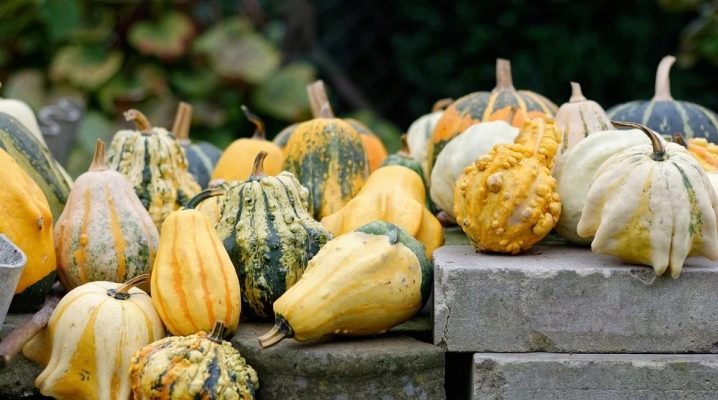
A personal plot is not only a vegetable patch, but also a place where we rest, nourished by the comfort, beauty and positive mood of the world around us. And you can make this world fabulously beautiful with the help of the gifts of nature. One of which is a decorative pumpkin.
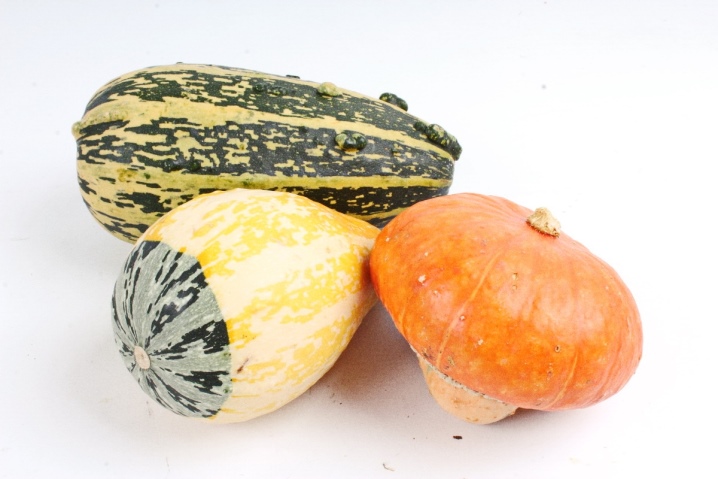
Peculiarities
The decorative pumpkin got to our latitudes thanks to the Spaniards, who brought this plant to Europe from South America, where it was grown by the Maya, Aztecs and other Indian tribes. Nowadays, it is most common in Russia, India and China. It is not grown only in the northern regions, where the short summer does not give a rich harvest.
Ornamental pumpkin belongs to annual melons and gourds... It grows, placing its lashes horizontally on the soil, but if its stems are directed with the help of supporting trellises, then it will freely begin to curl upward, creating shady tents for the recreation area.
Traditionally, pumpkin is considered to be round and orange, but this is not entirely true. Depending on the varietal characteristics, it differs in shape, size and color.
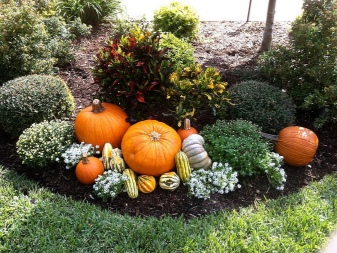
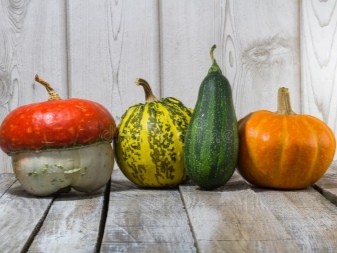
The best species and varieties
In this melon culture, 2 subspecies are distinguished. In curly (liana-like) and bushy ornamental pumpkins, lateral lashes grow in different ways.
If you want to plant greenery on a small dotted area, then it is better to use a bush subspecies. It will compactly create an oasis of greenery with amazing fruits. A curly decorative pumpkin will take up a large space and cover up to 2.5 meters with its greenery.
The maximum greenery grows in June, flowering begins in July. At this time, the plant looks very beautiful: large flowers appear among the rich greenery. The flowers of most varieties are odorless, and some do not smell very good. Flowering ends quickly and small pumpkins are born in August.
As they mature, they become brighter and brighter, acquiring the most bizarre shapes. Each variety is unique in its own way.

"Lagenaria"
Sometimes it is also called "gourd" or "serpentine gourd", it is distinguished by the intricacy and variety of forms of fruits... A vegetable can be in the form of a bottle, a swan, a jug, or a nesting doll. There are up to 12 pumpkins per plant. The leaves are large, slightly rounded. The lashes are considerably longer than those of other varieties and can reach 12 meters.
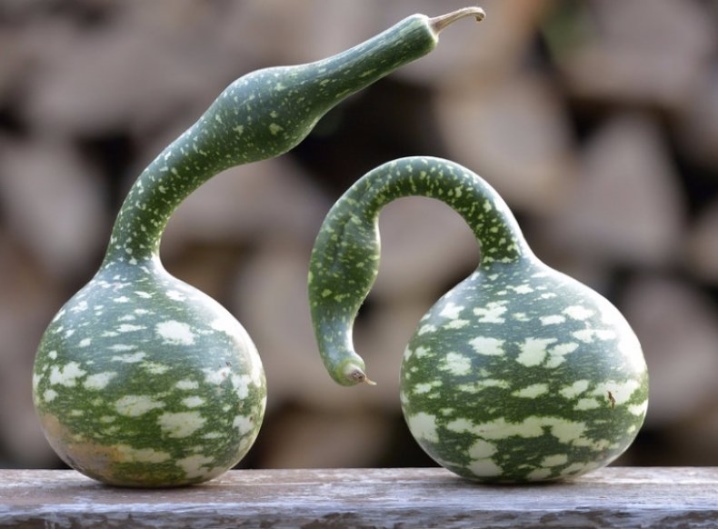
"Pear"
Pumpkins of this variety are pear-shaped: long at the top and widened at the bottom. They can be very diverse in color: both yellow palette and watermelon striped colors. There are also unusual individuals with 2 colors: lemon on top and green-white stripe below. Up to 20 "pears" grow on one bush.
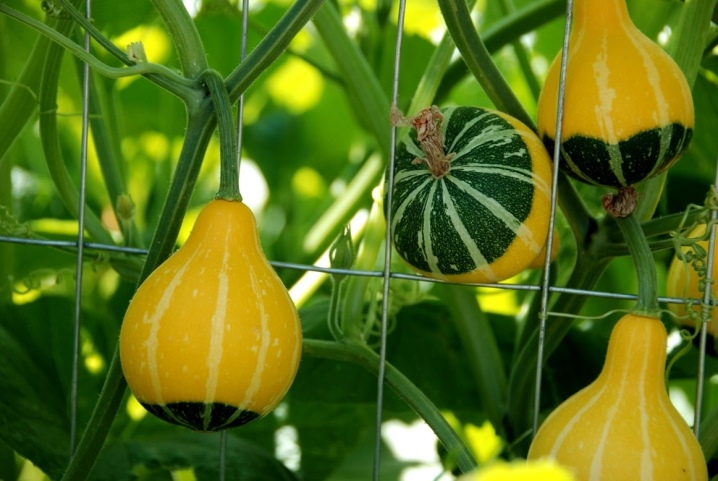
"Crown"
This variety has fruits of different shades in the form of medium-sized stars-crowns.... Sometimes they resemble umbrellas in shape. Whitish-yellow and gray-green in color. Scourges grow up to 4 m, up to 15 fruits are formed on them.
The foliage has a beautiful emerald color.

"Fango"
It has round, multicolored fruits with well-defined segments. From above, these vegetables look like flowers. Scourges reach 3 m, 10-15 fruits grow on them, the foliage of the plant is wrinkled green.

"Mandarin"
Orange-red fruits, round, small, with slight segmentation. There are about 15 fruits on the bush.

"Little Red Riding Hood"
It is also called "Fungus" because the shape of the vegetable resembles a mushroom. The pumpkin is light below, and the top is orange-red. Up to 20 pumpkins are harvested from 1 bush.
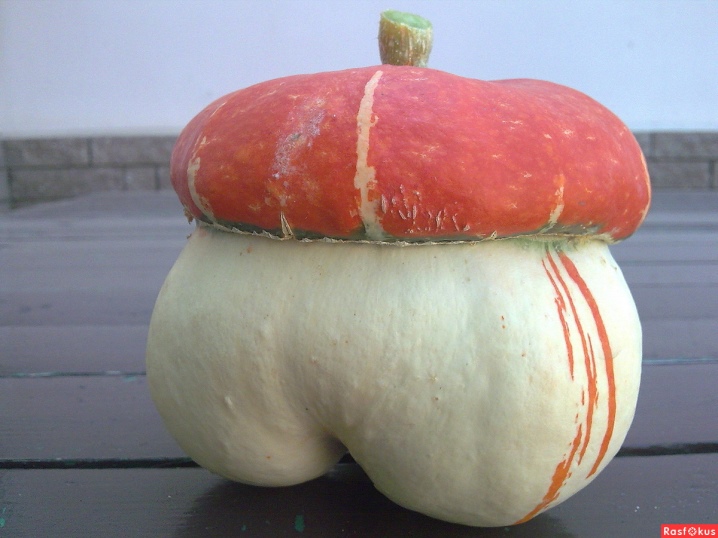
"Little Boo"
It has small white pumpkins resembling heads of garlic, with a green stalk. Pumpkins have a perfectly smooth surface with clear segmentation.
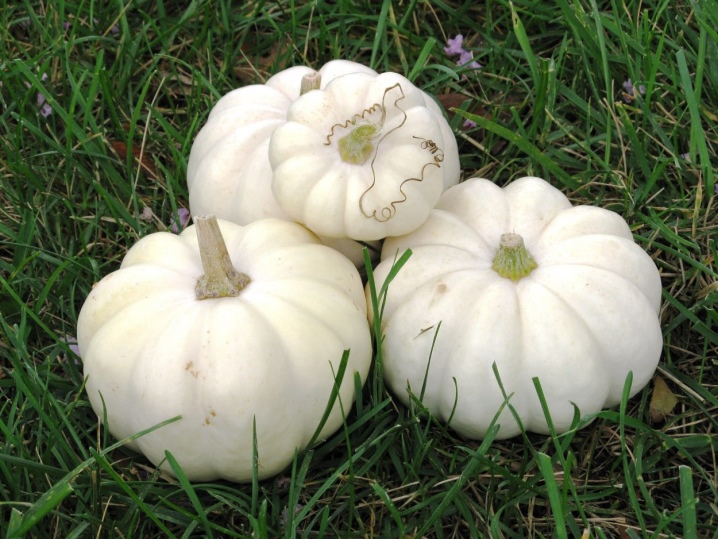
"Warty"
It has fruits of various shapes (oval, round, flattened, pear-shaped), which are covered with characteristic wart growths. Combines different colors: white, black, green, orange, gray. About 30 vegetables ripen on lashes up to 4 m.
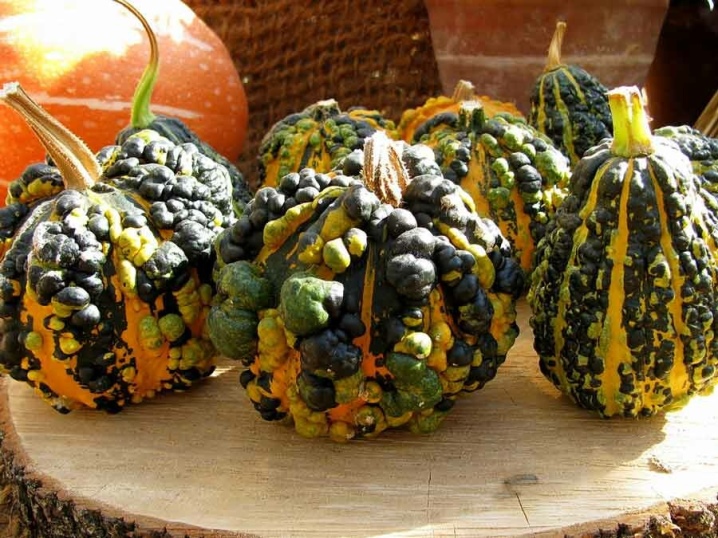
"Orange"
Pumpkins are very much like an orange in shape. They grow 15 pieces per bush, each up to 10 centimeters in diameter, their weight reaches 300 g.
The peel is colored in the colors of a yellow-orange palette.

"Turkish turban"
The pumpkin is turbid in shape of the fruit. The fruits are of various sizes. The color palette is very diverse: from white-milky to bright orange.

Other varieties are also peculiar: for example, Sweet dumpling on a bush it has only 5 fruits, but large (about 500 g). "Shahrezada Zvezda" pleases with yellow, white, dark green miniature pumpkins with longitudinal and transverse stripes. Cucurbita maxima impressive shape of huge mushrooms of different colors. Quite rare variety Bischofsmutzen consists of multi-colored hemispheres: one of them is white, and the second is green or red. Krivosheyki Cou-Tors Hative goose-shaped covered with orange bumps.
Very often the seeds are sold in a mixture ("Rattle", "Surprise", "Souvenir" and others), where different varieties are combined according to some principle: for example, all turban or all of the same color palette, but differ in shape and size.
Having planted seeds from such sets, it is interesting to expect what kind of pumpkin surprise this amazing plant has prepared.
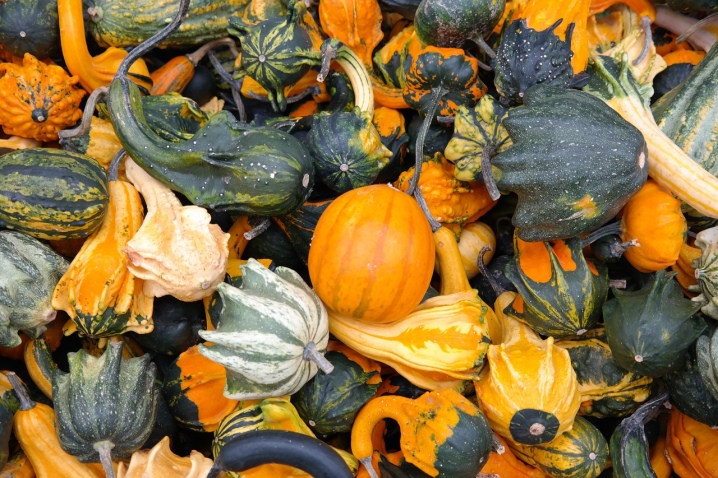
Landing
Ornamental pumpkin is grown from seeds. They can be sown directly into the ground, but by the time of sowing, the soil should already be well warmed up by the sun. And you can plant seeds for seedlings and, accordingly, seedlings will be planted in open ground. Planting with seedlings will speed up the process of plant development; gardeners use this method when the warm spring is delayed, and in regions where the soil becomes warm only in the second half or end of May. Sowing seeds for seedlings is recommended in the first days of April.
First of all, it is required to prepare the soil: it is mixed with sand and sod soil, abundantly flavored with humus. The soil is disinfected and laid out in containers with a volume of at least 0.5 liters. It should be remembered that it is not allowed to dive the seedlings and transplant, therefore, only one seed should be planted in each container. When planting, seedlings must be placed in the hole with the planting soil.

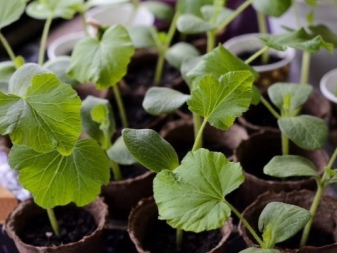
Seeds are germinated before planting in any composition to stimulate growth. The seeds should be in a warm solution for half an hour, then they are placed on a gauze cloth and wrapped in polyethylene. After 2 days, the sprouts will break through. After that, the seed is planted sprout upwards in a container with soil. Further cultivation includes watering, loosening the soil and applying mineral fertilizers.
Young seedlings are afraid of frost, even 1 degree of heat can be fatal for them. It is recommended to start hardening the plant 14 days before planting the seedlings. To do this, he is taken out into the street, starting at 15 minutes, every day increasing the time outdoors to three hours.
When planting, the distance between pumpkins planted in an open area should be at least 60 cm. The landing site must be sunny. The more sun, the richer the color of the fruit will be.
The plant does not like the wind, so it is advisable to choose a place where it will feel protected from gusty winds.
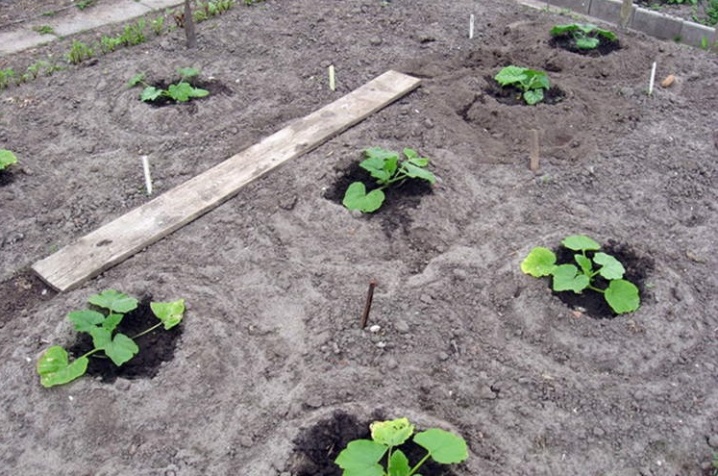
Care
In the first days before the roots are strengthened, the young plant should be protected from the cold and from the scorching rays of the sun. Until the full development of the lashes in dry weather, daily watering and 1 time per week fertilizing with nitrogen fertilizers are required. During bud formation, fertilizers should contain a maximum of potassium and phosphorus.In the country, it will be good to fertilize the soil with fresh and rotted manure.
If you want to grow a pumpkin on the balcony, you should be ready to provide the necessary assistance in pollination of the plant. You can do it yourself and without insects. To do this, in the early morning you should arm yourself with a soft-bristled brush and, having dipped the brush into the pollen of a male flower, transfer it to a female one.
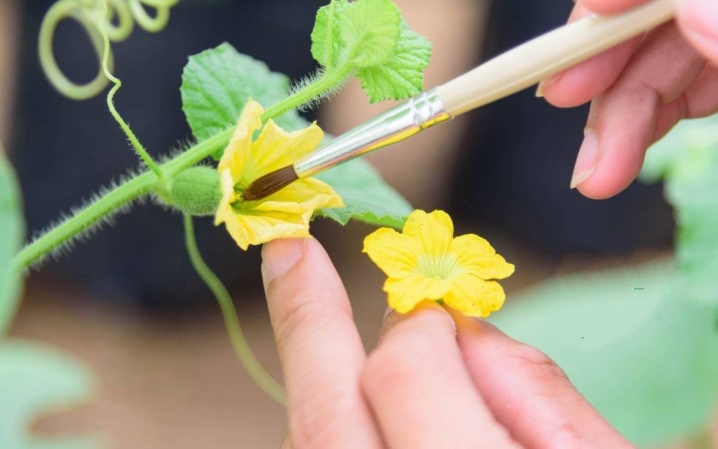
Diseases and pests
The decorative pumpkin is afraid of the following.
- Powdery mildew, which can destroy ovaries and fruits. The disease appears as a white coating covering the entire plant. Helps to fight this problem 1% solution of vitriol.
- Root rot, capable of killing a plant. You can avoid this by properly organizing watering.
- Slugeating leaves and damaging the fruit. A mixture of ash and lime (50/50) will get rid of these pests.
- Melons aphids, due to which the leaves rot and curl. This problem arises when the rules of crop rotation are violated and in the case of an unfavorable neighborhood of plants. They fight aphids with a mild soap solution that is sprayed on the plant.
Experienced summer residents believe that pests can be attracted by neighbors dangerous for pumpkins: onions, peas, spinach. Therefore, these crops should be placed at a distance. Quite often, the ovaries decay and fall off, and inexperienced vegetable growers begin to intensively feed the plant, considering the lack of nutritional components to be the reason. This is the wrong decision.
The problem is insufficient pollination. You can do it manually.
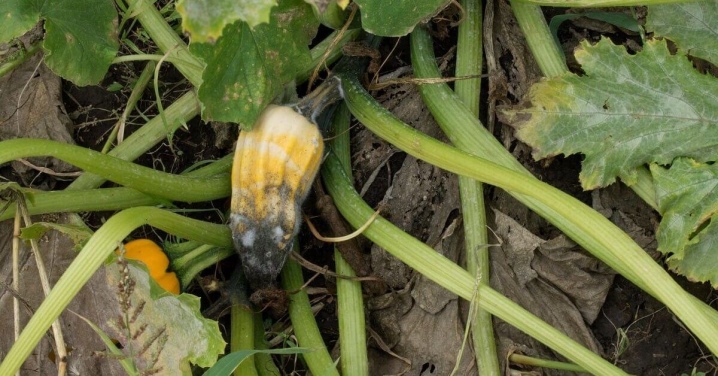
Can you eat and how to use it?
Producers of this melon culture have directly opposite answers to the question: is it possible to eat ornamental pumpkin? Each variety is unique, including in taste.... Many ornamental varieties have very tough, sometimes sour or bitter flesh, and therefore it is not recommended to eat it due to its low taste.
However, it is possible to use some varieties in the preparation of puddings, casseroles, cereals. In this case, choose pumpkins with a thin peel, which have not yet had time to lie down and become coarse... The heat treatment time should be optimal for sufficient softening of the pulp.
For example, some of the fruits of "Lagenaria" are purposefully grown for human consumption, they only use young pumpkins for this.... They resemble the mild taste of zucchini with a pungent bitterness, but require heat treatment to remove the bitterness. It is added to salads, soups, desserts, served separately as a side dish. Also, this variety is used in folk medicine to treat heart disease and problems of the gastrointestinal tract and kidneys.

Little Red Riding Hood, Sweet Dumpling are recommended to be eaten both raw and after heat treatment. "Little Red Riding Hood" has a pleasant sweetish taste, and Sweet Dumpling will surprise you with a fruity aroma.
"Little Boo" is quite suitable for cooking: it tastes very good. Variety "Goose in apples" great for making cereals and purees.
"Crown" bitter, it is rarely used as food. But the varieties "Pear", "Warty", "Fango", "Mandarin", "Orange" do not recommend eating at all.
The main function of this pumpkin is still decorative. It is actively used in landscape design. This melon culture fits perfectly into the currently fashionable Provence style.
Rustic exoticism in the form of a wooden fence, which acts as a trellis for lashes rich in greenery with bright beauties, looks very harmonious on personal plots.
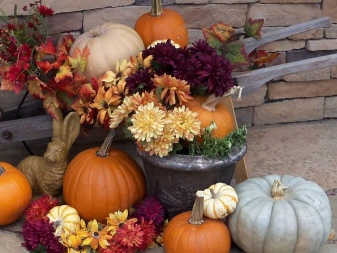
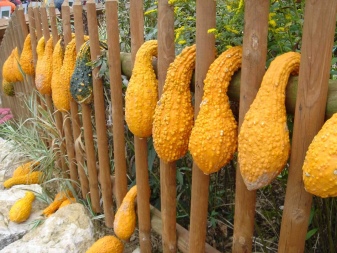
With the help of dense large greenery, you can decorate outbuildings or any flaws in the house. Having installed arcuate supports, it is easy to organize shady recreation areas.
Some summer residents organize "children's" vegetable gardens on their plots, where labor skills and interest in agricultural work are taught to children. Of course, a pumpkin planted in such a garden will impress young vegetable growers. Having independently grown such a fabulous beauty from a seed, they will be proud of the results of their labor.
Admirers of this plant grow pumpkin even at home. It is easy to imagine a veranda, a kitchen, a balcony buried in greenery, where such a beautiful pumpkin has grown in a pot.
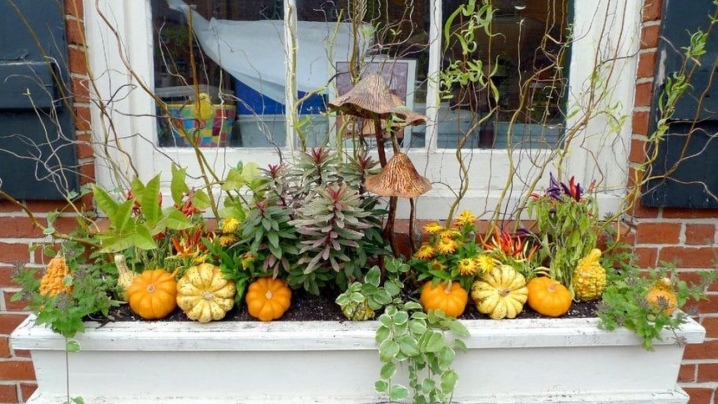
For decoration, it is possible to use only fruits, and not the whole plant.... Talented craftsmen make amazing crafts from them. Removing the soft core and cutting out various shapes, patterns, using additional decorative elements as needed, the craftsmen create vases, pots, candlesticks, figures of fantastic creatures, boxes with lids, autumn compositions and much more. Craftsmen create real masterpieces of artistic painting from such an unusual material. They even burn plot pictures on it.
Bottle gourd is still used in Africa, China, and India today. Musical instruments are made from its ripe fruits. The rind of the plants is used by the Indians to make smoking pipes.
The technology for preparing the material is quite painstaking. For some products, the pumpkin needs to be dried. Drying takes 3 to 6 months. Seeds thundering when shaken are a sign that the fruit is ready for making crafts.
You can also believe the dryness of a vegetable by throwing it into the water: if it does not sink, it means that the core has dried up.
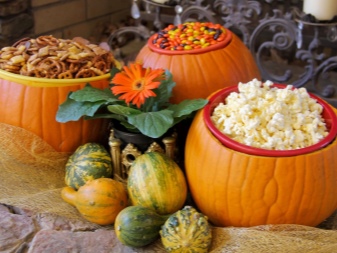
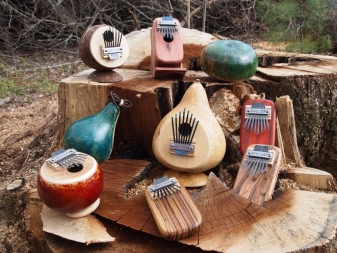
The dried pumpkins are used to make vessels for wine and baking dishes. Pumpkin products, properly dried and after processing, coated with acrylic varnish or wax, retain their strength and original appearance for a long time.
To cut holes, drills with drills of different sections, small saws, and serrated knives are used. For the high-quality implementation of creative ideas, special carving kits are suitable, which contain sets of the necessary tools. Pumpkin crafts are used in the interior of living quarters, recreation areas and as decorations in the garden.

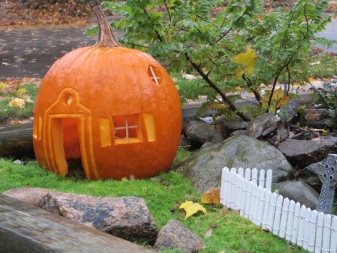













The comment was sent successfully.